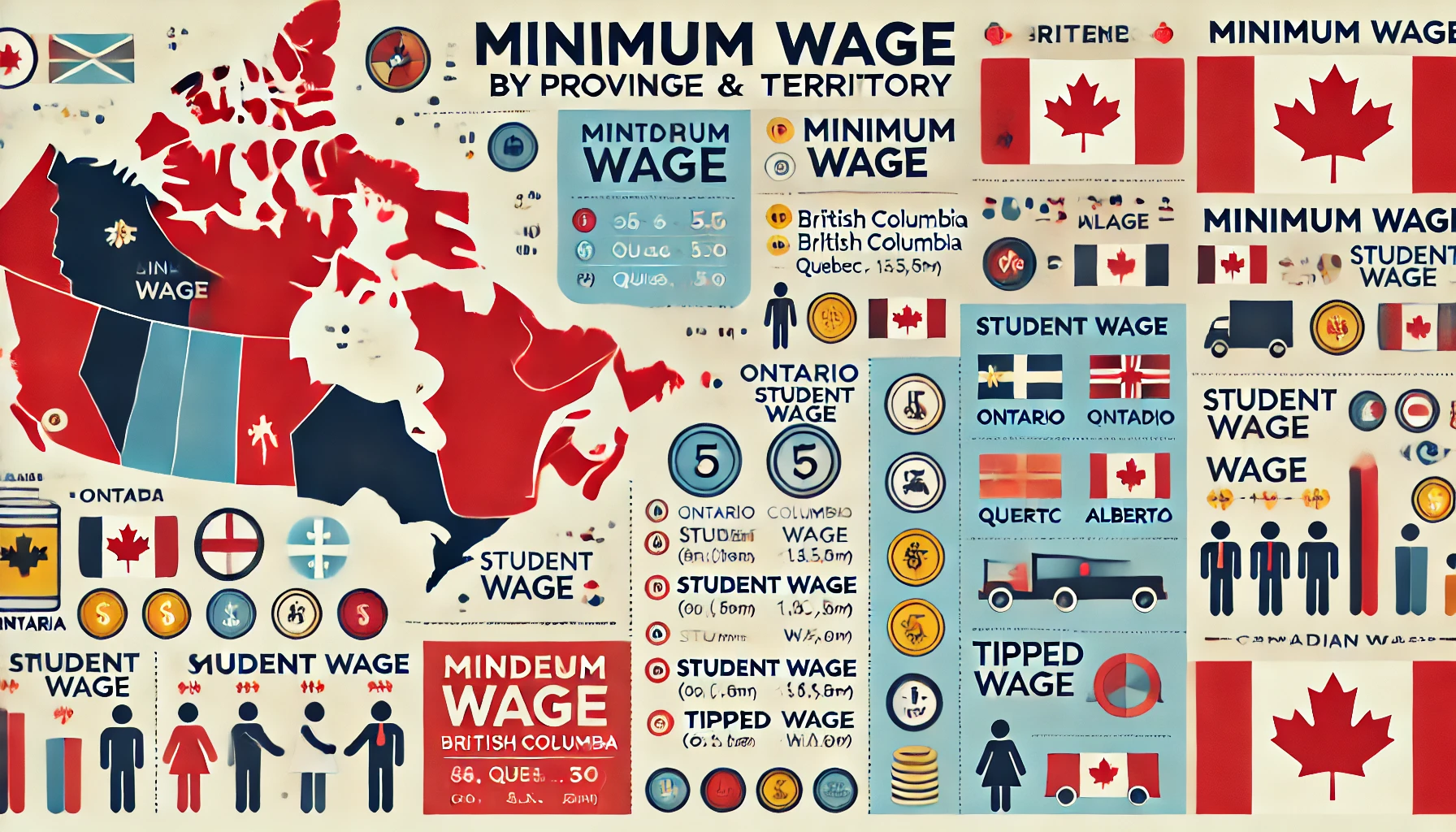What is the Minimum Wage in Canada? A Complete Guide by Discoveringly
In Canada, the minimum wage is an essential element of the labor market, setting a baseline pay that employers must offer to workers. While the federal government establishes minimum wage guidelines, each province and territory has the authority to set its own minimum wage rates based on local economic conditions and living costs. As a result, minimum wages can vary significantly across the country, and each year, rates may adjust to align with inflation and cost-of-living changes. Here’s a comprehensive guide to Canada’s minimum wage landscape in 2024.
Understanding Minimum Wage in Canada
Minimum wage is the lowest hourly rate employers can legally pay workers, and it applies to most job sectors. However, certain jobs, like those in agriculture or tipped service roles, may follow different regulations depending on provincial and territorial laws. This system ensures that workers receive fair compensation while promoting a sustainable standard of living across the country.
Key Factors Influencing Minimum Wage in Canada
The minimum wage rate is influenced by several key factors, including:
- Cost of Living: High-cost regions, such as British Columbia and Ontario, generally set higher minimum wages than lower-cost areas.
- Economic Conditions: The economic climate, including inflation, employment rates, and regional GDP, impacts how provinces and territories adjust their minimum wage levels.
- Legislative Goals: Governments aim to balance worker protections with economic growth. In setting minimum wage rates, they consider factors like business sustainability and the potential impact on employment rates.
Minimum Wage Rates by Province and Territory (2024)
Canada’s minimum wage rates vary by region. Here’s a breakdown of minimum wage rates across Canada in 2024:
1. Ontario
- General Minimum Wage: $16.55 per hour
- Student Minimum Wage: $15.60 per hour (for those under 18 and working fewer than 28 hours a week)
- Liquor Servers: Ontario abolished the special liquor server wage, bringing it up to the general minimum wage rate.
2. British Columbia
- General Minimum Wage: $16.75 per hour
- Live-in Support Workers: Hourly rates can vary but are based on sector standards.
- Seasonal Agricultural Workers: Rates can depend on output (piece rates) but must meet minimum wage standards.
3. Quebec
- General Minimum Wage: $15.25 per hour
- Tipped Employees: $13.10 per hour
4. Alberta
- General Minimum Wage: $15.00 per hour
- Students Under 18: $13.00 per hour (for the first 28 hours per week, then $15.00 per hour)
5. Manitoba
- General Minimum Wage: $15.30 per hour
6. Nova Scotia
- General Minimum Wage: $15.00 per hour (April 2024 adjustment)
7. Other Provinces and Territories
- Prince Edward Island: $15.00 per hour
- New Brunswick: $14.75 per hour
- Newfoundland and Labrador: $15.00 per hour
- Yukon: $16.77 per hour
- Northwest Territories: $16.05 per hour
- Nunavut: $16.00 per hour (one of the highest due to high living costs)
Minimum Wage Adjustments and Trends
Canada’s minimum wage rates are typically reviewed annually, with adjustments made to match inflation, improve worker welfare, and support economic stability. For example, some provinces, like British Columbia and Quebec, have indexed their minimum wage to inflation, meaning annual increases automatically adjust based on the Consumer Price Index (CPI). Other provinces opt for periodic reviews to set new rates as needed.
The Impact of Inflation on Minimum Wage
As inflation rates rise, so does the cost of living. In 2024, many provinces raised their minimum wage significantly to help workers meet basic needs. For instance, Ontario’s recent hike to $16.55 per hour represents an increase aimed at mitigating inflation’s impact, ensuring workers can better cope with rising expenses. This annual adjustment is becoming more common as governments respond to the economic challenges faced by low-income households.
Federal Minimum Wage in Canada
In Canada, the federal minimum wage applies only to federally regulated industries, such as banking, telecommunications, and transportation, where a standardized rate ensures fairness across the country. As of 2024, the federal minimum wage is set at $16.65 per hour. Provinces and territories may have higher rates, but federally regulated employers must at least meet the federal minimum wage rate.
Pros and Cons of Minimum Wage Increases
Benefits of Higher Minimum Wages
- Improved Quality of Life: A higher minimum wage helps low-income workers afford necessities, like housing, food, and healthcare.
- Economic Stimulus: With more disposable income, workers are likely to spend more, supporting local businesses and boosting the economy.
- Reduced Poverty: Increased minimum wages can reduce poverty levels, as workers are able to meet basic needs and save for the future.
Challenges of Higher Minimum Wages
- Increased Costs for Businesses: Higher wages can lead to increased operational costs, particularly for small businesses.
- Potential Job Losses: Some businesses may reduce their workforce to offset rising labor costs, affecting job availability in certain sectors.
- Inflation Pressure: When wages rise across the board, there’s a risk of inflationary pressure as businesses may raise prices to balance expenses.
Key Takeaways for Canadian Workers
For Canadian workers, understanding minimum wage rates in their province or territory is essential, as it directly impacts income and financial stability. As rates are reviewed regularly, staying informed helps workers advocate for fair compensation and understand their rights within the workforce.
Quick Tips:
- Check Regular Updates: Minimum wage rates are adjusted annually in most provinces, so workers should check for updates to ensure they’re receiving fair wages.
- Know Your Category: Some employees, such as students or tipped workers, may have different minimum wage rates. Understanding your specific wage category is crucial.
- Use Resources: Government websites and labor organizations provide updated information on wage rates, worker rights, and employment standards.
Canada’s minimum wage system aims to balance the financial needs of workers with the economic stability of businesses. Although each province and territory sets unique rates based on local factors, all Canadians benefit from a system that promotes fair pay, decent working conditions, and a minimum standard of living. By staying informed and understanding these policies, workers and employers alike can navigate Canada’s evolving labor landscape with confidence.






